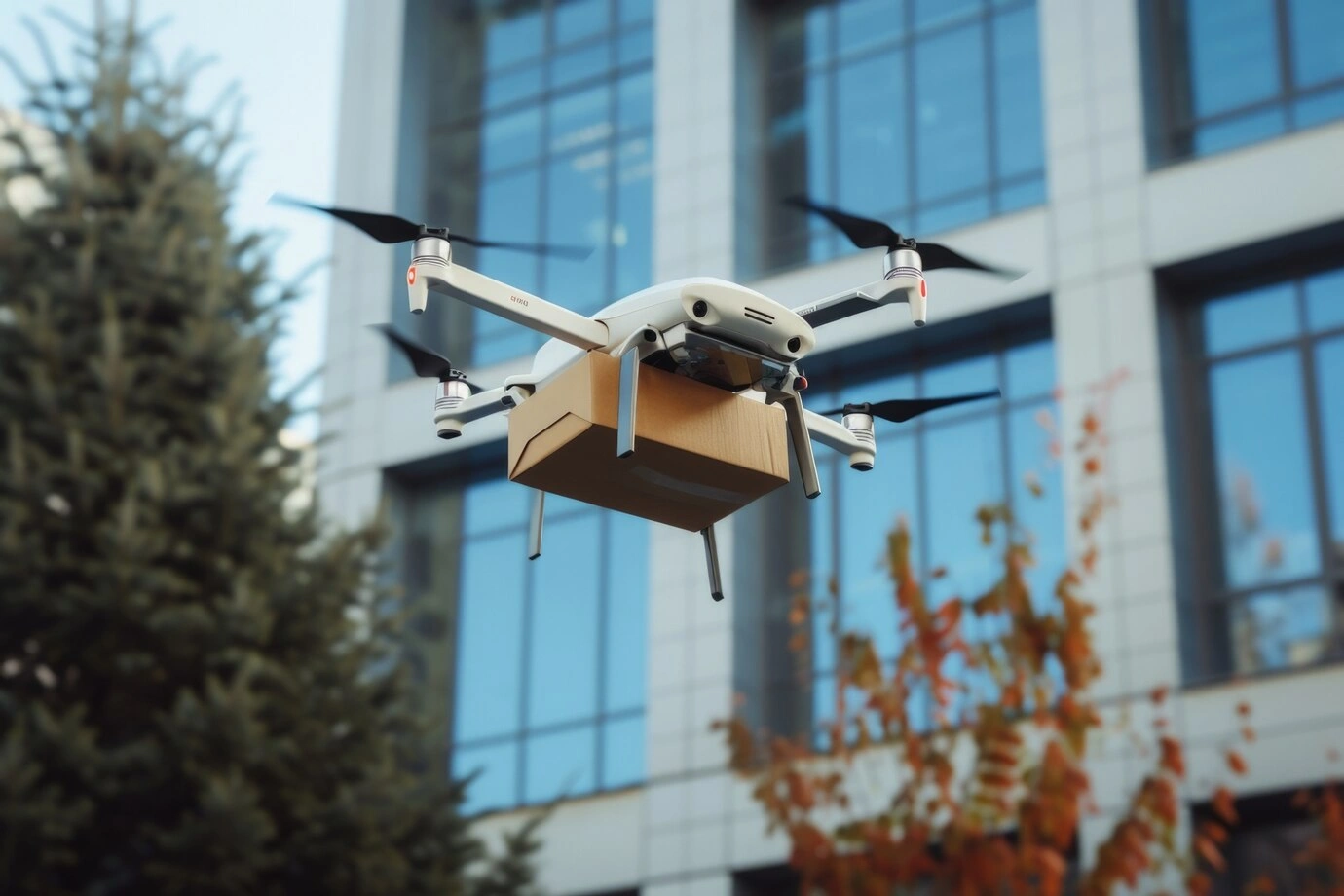Introduction
Do you have a brilliant idea but don’t know how to turn it into reality? Getting your idea manufactured is not an easy task; it requires thorough preparation and consideration from various aspects to ensure successful realization. In the process of creation, we are not only seeking new ways to solve problems or meet needs but also exploring how creativity can truly change our lives or society. This article will provide you with detailed step-by-step guidance, from the initial concept to the final product launch, helping you achieve the transformation from idea to reality step by step.
Clarify Your Idea
Confirm Market Demand
Before starting any production process, it is essential to confirm whether there is demand in the market. To do this, you need to conduct detailed market research, including gathering and analyzing feedback from potential consumers and conducting in-depth research on existing competitive products. Obtain consumer opinions through surveys, focus group discussions, or online reviews to understand their needs and pain points. If there are similar products already in the market, you need to clarify how your idea stands out, identifying its differentiation advantages. For example, your product may offer superior functionality, competitive pricing, or provide a better customer experience. Through these efforts, you can ensure that your idea not only meets market demands but also stands out in competition.
Set Clear Goals
When you define your creative goals and expected outcomes, it helps you focus and effectively drive the entire process forward. Establishing clear short-term and long-term goals is crucial as they provide specific tasks and expected outcomes for each stage. Short-term goals can help break down long-term goals, making them more actionable and achievable. Ensure these goals are specific and measurable, making it easier to assess progress and make necessary adjustments. This way, you can maintain motivation and focus throughout the creative process to achieve your ultimate objectives.
Feasibility Assessment of the Idea
When evaluating the feasibility of your idea, a thorough analysis of technical, resource, and time factors is necessary. First, conducting initial technical assessments is an essential step to determine whether you already have or can acquire the necessary technology to support the realization of your idea. This includes assessing whether existing technologies are sufficient to support required functions or solutions, or if further technological development or procurement is necessary.
Secondly, resource assessment is also crucial. This includes human resources, funds, equipment, and other necessary material support. Evaluating the availability and adequacy of resources can help identify potential bottlenecks or challenges that may be encountered in advancing the creative process, as well as how to effectively allocate and utilize these resources.
Lastly, time management is a key factor in ensuring the feasibility of the idea. Assessing the required time and schedule ensures that necessary tasks and stages are completed within the expected time frame. This includes identifying potential time constraints and critical paths, as well as developing appropriate plans to address possible delays or challenges.
Through comprehensive and specific assessment, you can gain a clearer understanding of the technical, resource, and time investments required to realize your idea, laying a solid foundation for the effective advancement of the entire creative process.
Market Research
Target Market Analysis
When conducting market research, gaining an in-depth understanding of the target market is a crucial step in ensuring product success. Understanding consumer purchasing preferences and behavior patterns is critical. This includes what their needs are, what their focus points on product features are, and where they typically purchase similar products. Through market research, you can collect key market data and insights that can help you accurately formulate product positioning and marketing strategies to better meet the needs of the target market.
Consumer Feedback
Direct interaction with consumers is an effective way to obtain authentic feedback. Organizing focus group discussions or product showcases allows direct communication with potential consumers. This allows you to directly listen to their opinions and suggestions, understand their views on product design, features, and value. In addition, systematically collecting consumer feedback through surveys can help you adjust product characteristics and functions systematically, ensuring that the final product aligns closely with market demands.
Competitive Analysis
Competitive analysis is an important means of understanding market competition patterns and developing effective market strategies. By thoroughly studying competitors’ product features, pricing strategies, market coverage, and market responses, you can comprehensively assess their strengths and weaknesses. This analysis not only helps discover market opportunities and potential risks but also provides valuable references for formulating differentiated product positioning and precise marketing strategies. Through in-depth competitive analysis, you can confidently develop product strategies that differentiate from competitors, enhancing product competitiveness and attractiveness in the market.
Create Prototype
Prototype Design
When you start creating a product prototype, detailed prototype design is crucial. The design process is not only a step in turning ideas into reality but also ensures that the product meets expectations in terms of functionality, appearance, and user experience.
- Define Functional Requirements: Clarify the main functions and features of the product, including how users interact with the product and the core issues the product needs to address.
- Draw Design Sketches: Use graphic design software or hand-drawn sketches to create design proposals. The sketches should be as detailed as possible, including dimensions, shapes, button locations, etc., ensuring that every design detail is clearly visible.
- Consider User Experience: Design not only needs to consider functional requirements but also focus on the intuitiveness and usability of the user interface, ensuring that users can easily understand and operate the product.
Choose Suitable Materials
Choosing the right materials is crucial for product quality and cost. Before determining the most suitable materials, thorough research and understanding of the characteristics of different materials are needed.
- Material Characteristics Analysis: Understand the physical characteristics such as strength, abrasion resistance, weather resistance, etc., and their applicability in product manufacturing.
- Cost-effectiveness Consideration: Balance the cost of materials with product performance, choosing materials that meet requirements without excessively increasing manufacturing costs.
- Environmental Requirements: Ensure that the selected materials comply with local market and regulatory environmental regulations, avoiding future legal or ethical issues in market promotion.
Create Prototype
Creating a prototype is a key step in verifying design and functionality. Whether through 3D printing, handmade production, or outsourcing to professional prototype companies, creating prototypes can help you discover and address potential issues before formal production.
Choose Production Methods: Choose appropriate prototype production methods based on budget and schedule. 3D printing is suitable for complex structures, handmade production is suitable for rapid concept validation, and professional companies can provide high precision and complexity prototypes.
Functional Testing: Conduct functional testing through the created prototype to confirm basic operations and expected functions meet design requirements.
- Collect User Feedback: Deliver prototypes to potential users or stakeholders to collect their feedback and suggestions for timely adjustments and improvements.
Choose Manufacturer
Find Suitable Manufacturers
Finding suitable manufacturers is a key step in ensuring successful product production. You can find potential manufacturers through various channels, such as internet platforms, attending industry exhibitions, or contacting industry associations for recommendations. These approaches can not only help you find manufacturers with technical capabilities and production capacities that meet your needs but also provide opportunities to communicate directly with multiple manufacturers, gaining in-depth understanding of their production facilities, quality control standards, and cooperation conditions.
Negotiate Contracts
After selecting manufacturers, contract negotiations with them are essential. Before signing a contract, it is crucial to clearly define the responsibilities and obligations of both parties. The contract should include detailed content such as production cycles, specific quality standards, price terms, and payment methods. Clear contract terms can effectively avoid potential disputes and ensure the smooth progress of the production process.
Quality Control
Quality control is a crucial link in the product production process. You can arrange for dedicated personnel to conduct strict quality monitoring at the production site to ensure that products meet design and quality standards. Regular on-site inspections and sampling tests are effective measures to ensure product quality. In addition, consider commissioning independent third-party quality inspection agencies to conduct comprehensive quality sampling inspections, further enhancing the reliability of product quality assurance and customer trust. Through meticulous quality control measures, you can ensure that the final products produced meet market and consumer expectations.
Develop Marketing Strategies
Brand Positioning
Brand positioning is a key step in establishing a unique position for your product in the market. First, you need to clarify the core values of the brand and the target consumer group. For example, if your product is a high-end home product, the brand image may be luxurious and exquisite, and the target consumers may be high-income families pursuing quality life. Through precise brand positioning, you can create a distinctive brand image that attracts the attention and loyalty of target consumers.
Choose Marketing Channels
When selecting marketing channels, choose appropriate platforms based on consumer behavior and preferences. For example, use social media platforms such as Instagram and Pinterest for visual marketing to showcase product design and functional advantages, attracting young, fashionable consumer groups. At the same time, display physical products through e-commerce platforms like Amazon or physical stores to enhance consumer confidence in purchase decisions. Develop comprehensive and effective marketing strategies based on the characteristics of different channels to maximize brand exposure and influence.
Promotion and Advertising
Promotion and advertising are essential means of brand promotion and need careful planning and execution. Develop detailed promotional plans, including targeted advertising placements, participation in industry exhibitions for public relations activities, and seasonal or promotional activities. Increase brand visibility and product sales through various means, such as launching limited-time offers before specific holidays, or collaborating with well-known social media influencers for product reviews and promotions. Regularly evaluate the effectiveness of various promotional activities, adjust and optimize strategies based on market feedback to ensure continuous enhancement of brand promotion effectiveness and market influence.
Product Launch
Product Packaging
Well-designed product packaging is one of the secrets to attracting consumer attention. Imagine your product displayed on store shelves; eye-catching packaging designs can immediately attract consumer attention. Choosing environmentally friendly materials not only meets modern consumers’ focus on sustainable development but also demonstrates your brand’s sense of responsibility. Ensure that the packaging is not only beautiful but also practical, effectively protecting the product, enhancing the product’s added value, and improving the overall consumer experience.
Launch Promotion
Effective market pre-launch activities are crucial before a product hits the market. Utilize social media platforms like Instagram and Facebook to create teasers and countdowns, attracting the attention of your target consumers with carefully curated content. Organize press releases or media trial events to give consumers an early taste of your product. Develop a detailed launch promotion plan that includes multi-channel marketing efforts both online and offline to ensure the product makes a significant impact on the market, quickly building brand awareness and influence.
After-Sales Service
High-quality after-sales service is key to retaining customers. Establish a comprehensive after-sales service system, including convenient return and exchange policies, 24-hour online technical support, and regular feedback communication with consumers to address their questions and issues. Thoughtful and attentive after-sales service not only increases customer satisfaction and loyalty but also helps build a strong reputation and a solid brand image in a competitive market.
Facing Challenges and Risks
Anticipating Potential Issues
Throughout the production and sales processes, various challenges and risks can arise, making foresight crucial. For example, production delays may occur due to raw material supply issues, equipment malfunctions, or human resource challenges. Quality issues are also a common challenge, potentially involving manufacturing defects or design flaws. Additionally, the intensity of market competition can impact product sales and market share.
Developing Contingency Plans
To effectively handle these potential issues, detailed contingency plans are essential. These plans should include specific response measures and a clear division of responsibilities to ensure quick and effective problem-solving when issues arise. It is advisable to establish a dedicated contingency team with relevant skills and experience, clearly defining their roles and authorities. Regular emergency drills and scenario training can help the team improve their response capabilities and efficiency in handling sudden incidents.
Continuous Improvement
Continuous improvement is key to maintaining product competitiveness and market share. Once the product is launched, it is important to continuously monitor market changes and consumer demand through market research and feedback. By collecting and analyzing data, you can identify issues and areas for improvement. For example, use customer surveys, online reviews, and sales data to collect consumer feedback, then use this information to make product enhancements and upgrades. Through continuous improvement, you can not only enhance the quality and performance of your product but also adapt to rapid market changes, ensuring that your product remains competitive and aligned with market demand.
Conclusion
Getting an idea manufactured is a complex and challenging process, but it is also a journey filled with opportunities and a sense of accomplishment. By following these key steps—clarifying your idea, conducting market research, creating a prototype, choosing a manufacturer, developing a marketing strategy, and boldly facing challenges—you can turn your idea into reality and ultimately achieve commercial success.
If you need more help and guidance throughout this process, don’t hesitate to contact our expert team. We will provide you with professional consultation and services to help you stand out in the competitive market and achieve both commercial success and sustained growth.




